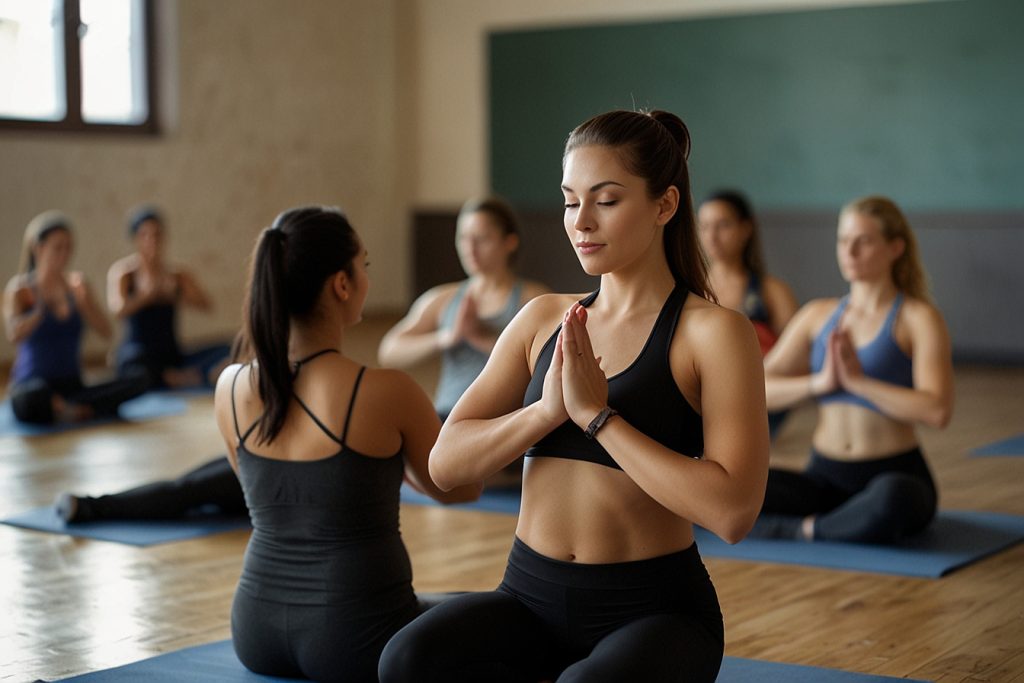Yoga has been gaining popularity as a form of exercise that not only promotes relaxation and flexibility but also helps build strength and tone the body. Jane Benson of Bikram Yoga Mornington said “If you’re wondering whether yoga can actually help you achieve a toned physique, the answer is yes. Yoga can help tone your body, but it depends on how you practice it and what your goals are.”

Yoga is a great way to build strength and muscle tone, especially in the core, arms, and legs. Practicing yoga regularly can help you develop lean muscle mass, which can give your body a more toned appearance. In addition, yoga can help improve your posture and balance, which can also contribute to a more toned and sculpted look.
While yoga can help tone your body, it’s important to keep in mind that it’s not a one-size-fits-all solution. The type of yoga you practice, the intensity of your practice, and your overall fitness level can all impact how much muscle tone you’re able to achieve.
So, if you’re looking to use yoga to tone your body, it’s important to find a yoga practice that works for you and to be consistent in your practice. It is better to go to an expert in Bikram Yoga Mornington for the proper yoga execution.
Physical Benefits of Yoga
Yoga is a popular form of exercise that can provide numerous physical benefits. Here are some of the ways that yoga can help tone your body:

Enhancing Muscle Tone
Yoga poses can help you build lean muscle mass and tone your muscles. Poses such as plank pose, chaturanga, bridge pose, and boat pose can all help to strengthen and tone your muscles. Regular yoga practice can also help you maintain your muscle tone and prevent muscle loss.
Improving Balance and Flexibility
Yoga can help improve your balance and flexibility, which can also contribute to a more toned body. Many yoga poses require you to balance on one leg or hold a pose for an extended period of time, which can help improve your balance and stability. Improved flexibility can also help you move more freely and perform exercises with better form.
Boosting Strength and Endurance
Yoga can also help you build strength and endurance. While yoga may not be as intense as traditional strength training, it can still help you build muscle and improve your overall fitness. Regular yoga practice can help you build strength in your legs, core, and upper body, which can contribute to a more toned physique. Additionally, yoga can help improve your endurance, allowing you to perform exercises for longer periods of time.
Holistic Impact on Health
Yoga is a holistic practice that has a positive impact on your overall health. It is not just a form of exercise, but a way of life that encompasses physical, mental, and spiritual well-being. Here are some of the ways yoga can improve your health:
Yoga and Mental Focus
Yoga is known to improve mental focus and concentration. The practice of yoga involves focusing on your breath and being mindful of your body movements. This helps to calm your mind and improve your ability to concentrate. Regular yoga practice can also improve cognitive function and memory.
Diet and Lifestyle Factors
Yoga encourages a healthy diet and lifestyle. A balanced diet that includes protein, healthy fats, and complex carbohydrates is essential for a healthy body. Yoga also promotes mindful eating, which means eating slowly and being aware of the food you are consuming. This can help with weight loss and reduce the risk of overeating.
Consistency and Long-Term Effects
Consistency is key when it comes to reaping the benefits of yoga. Regular practice can lead to long-term effects such as reduced stress, better sleep, and improved overall well-being.

It is important to make yoga a part of your daily routine to see the full benefits.
In conclusion, yoga is a holistic practice that can have a positive impact on your overall health. By improving mental focus, promoting a healthy diet and lifestyle, and encouraging consistency, yoga can help you achieve a healthier and happier life.

